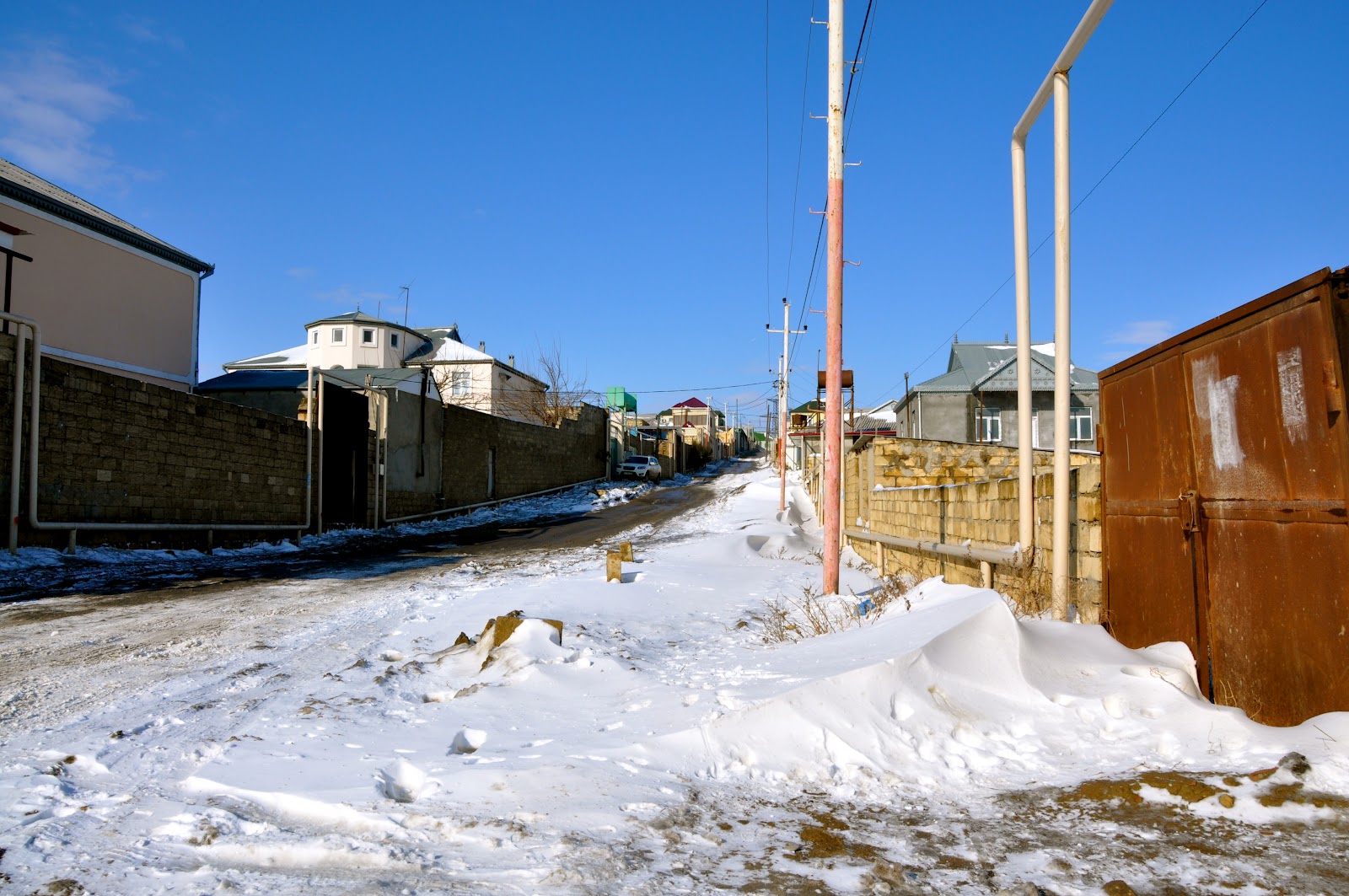Since the end of February, I've been thinking about what I could contribute to the coverage of Khojaly. I'm not sure what there is to write about this that hasn't already been written before, but it did get me thinking about the bigger geopolitical picture in this region (and others) after the collapse of the Soviet Union.
But first, very brief background about Khojaly: beginning on the night of February 25, 1992, during the Nagorno-Karabakh War, which broke out between neighbors Azerbaijan and Armenia as the Soviet Union collapsed, Armenian forces and some CIS troops occupied the town of Khojaly (or 'Xocalı' in the Azerbaijani). The majority of residents fled, who were joined by some members of the local garrison. One column of refugees ran into an Armenian military post, which fired indiscriminately, killing civilians, including women, children, and the elderly, as well as the garrison militia members who were trying to defend the group.
As tragic as the needless killing of civilians is, that is not my focus, as it has been covered extensively by others. (See below for a selection of links.) History has amply shown us that it is the nature of war to set the stage for people to commit atrocities, usually on all sides of any armed conflict, given adequate time, fear, and opportunity. In this sense, Xhojaly is just one more sad, microcosmic reflection of a wider trend of regional conflicts that will only become more frequent in the foreseeable future.
During the Cold War, regional conflicts (sometimes deeply rooted, age-old animosities based on religion, ethnicity, and/or nationalism) were subsumed within and frozen, if you will, by the global conflict between the West, led by the U.S. and NATO allies, and the communist bloc, led by the Soviet Union and its satellites. Perhaps people did not act out (much) because they feared that any full-scale regional conflagration could rapidly escalate into international proportions, ignite conflict between the superpowers, and thereby consume the world. Perhaps it was because the Cold War itself actually altered the way regional conflicts played out, like the Palestine-Israeli conflict, especially after the Suez crisis. Or perhaps everyone was just preoccupied with what the big kids on the block were up to, like, you know, nuclear stalemate.
The dissolution of the Soviet Union thawed those dormant, but by no means forgotten, conflicts. More perilously still, the power vacuum left in the wake of the collapse of the U.S.S.R. has set the stage for regional actors (such as Russia, Iran, and Turkey) to attempt to expand (or, in the case of Russia, restore) their spheres of influence, tempting further conflict. See, e.g., 2008 armed escalation between Russia and Georgia.
What does this mean for the U.S. and other world leaders? It would be impossible and unaffordable for the U.S., Germany, Great Britain, or other nations to intervene every time a regional and/or ethnic conflict arises, but what the U.S. and others can do is lead the formation of regional coalitions to police each region's own backyard, as it were. Short of the rise of another superpower (China, perhaps, or Russia getting the band back together)* to balance out the U.S. and generate bipolar stability, maybe that's the best we can do to help keep the peace. (Of course, the downside of this approach is that some dominant powers in some places of the world actually benefit from instability (though not outright conflict) in their region.)
* At one time, I might have speculated about a more strongly unified European block as a quasi-superpower, but that's looking less and less likely with every passing debt crisis.
Links for further reading:
- Wikipedia entry
- Human Rights Watch Report: Bloodshed in the Caucasus: Escalation of the Armed Conflict in Nagorno-Karabakh, 1992 (PDF download; Khojaly covered on pp. 19-24)
- Letter from Armenian Ministry of Foreign Affairs to United Nations, Mar. 3, 1997
- Human Rights Watch Response to Armenian Government Letter on the town of Khojaly, Nagorno-Karabakh, Mar. 24, 1997
- 20 years on, no justice for Khojaly victims, Jakarta Post, Feb. 22, 2012
- Tens of Millions of Americans Learn for the First Time What Happened in Khojaly, Press Release, Reuters, Feb. 24, 2012
- Azerbaijan Honors Victims of 1992 Massacre, New York Times, Feb. 26, 2012
- Justice for Khojaly!, EU Reporter, Feb. 26, 2012
And here are some pictures of the recent awareness campaign regarding Xhojaly in New York and Washington, D.C.






















.jpg)


























